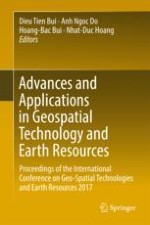This book discusses the latest advances and applications in geospatial technologies and earth resources for mine surveying and civil engineering. It also discusses mineral resources management and assesses many techniques such as unmanned aerial vehicles/drones, ground-penetrating radar, geographic information system (GIS) and GIS-based machine learning. The book gathers the proceedings of the International Conference on Geo-Spatial Technologies and Earth Resources (GTER 2017), which was co-organized by the Hanoi University of Mining and Geology (HUMG) and the International Society for Mine Surveying (ISM) and held in Hanoi, Vietnam, on October 5–6, 2017. GTER 2017 is technically co-sponsored by the Vietnam Mining Science and Technology Association (VMST), Vietnam Association of Geodesy, Cartography and Remote Sensing (VGCR), Vietnam National Coal-Mineral Industries Holding Corporation Limited (VINACOMIN), and the Dong Bac Corporation (NECO). The event is intended to bring together experts, researchers, engineers, and policymakers to discuss and exchange their knowledges and experiences with modern geospatial technologies, recent advances in mining and tunneling, and the geological and earth sciences. Given its breadth of coverage, the book will appeal to scientists in the field as well as professionals interested in related technological applications.
